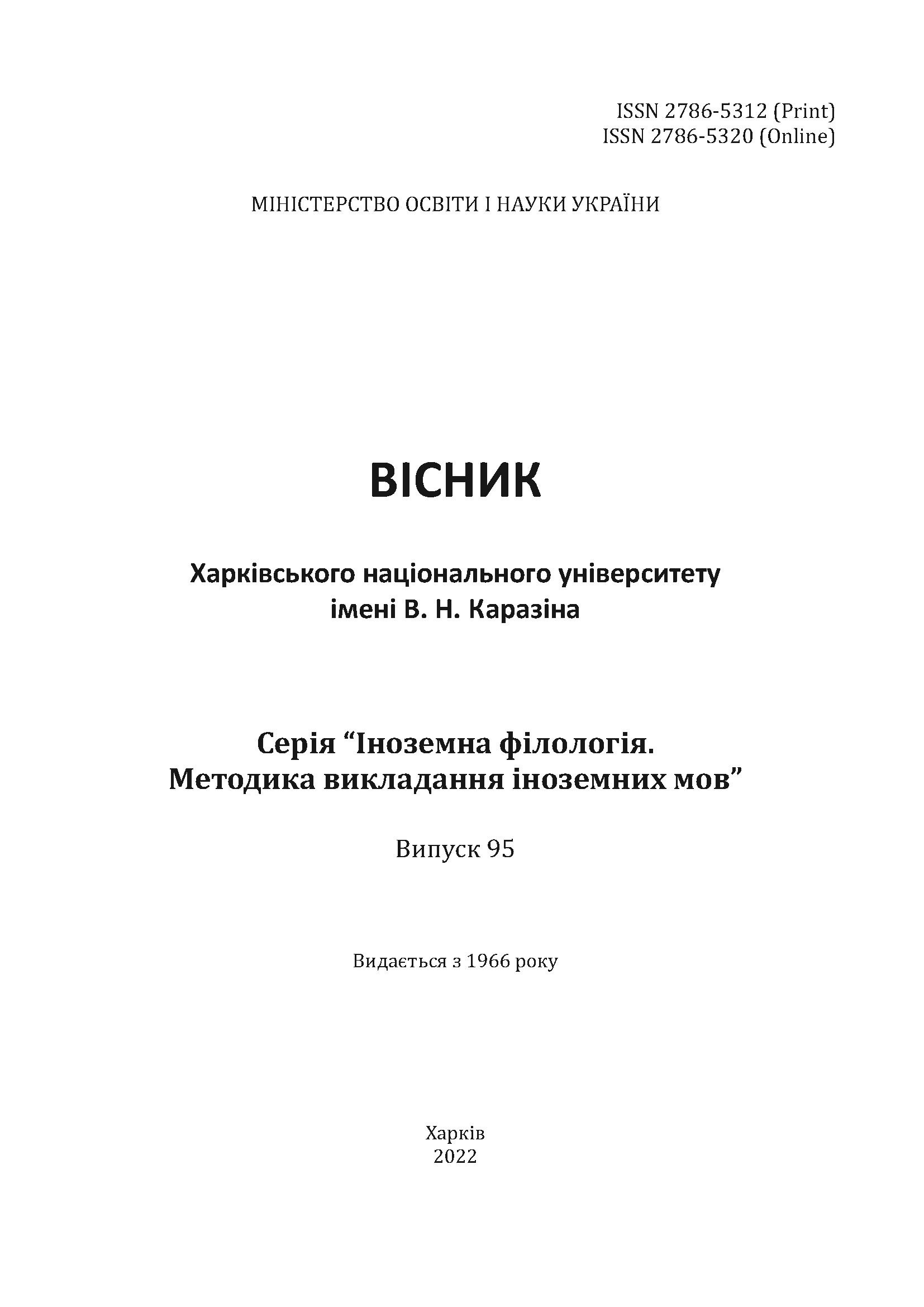Віршована байка і жарт: подібні і відмінні риси зі стилістико-синергетичної точки зору
Анотація
У статті на матеріалі німецькомовних текстів розглядаються жарт і вiршована байка як споріднені і водночас різні форми малого жанру, якщо розглядати їх із протилежних полюсів: як власне-байку і власне-жарт. Залежно від співвідношення стильових рис та їхньої інтенсивності, передусім риси комічного, утворюються перехідні форми, змішані тексти. З посиленням ролi комiчного байка виявляє тенденцiю до перетворення в жарт. Всі різновиди комiчного були завжди властиві байцi. Але комiчнiсть у ній не домінувала, оскільки перевага надавалася дидактичному призначенню байки. Комiчнiсть поступалася повчанню, моралі, вiддаючи їй перше мiсце. Якщо ж перше мiсце займає комiчнiсть, вiдтiсняючи мораль на заднiй план, то байка перетворюється на жарт. Щодо питання про спiввiдношення байки i жарту в статті викладено концепцiю В. Лiбхена, сучасного німецького теоретика байки і байкаря. Своєю формою жарт вiдповiдає формi Езопової байки, а саме риторичнiй байцi. В її основi, як i в основi жарту, лежить також ситуативна частина (чекання) та евристична, когнiтивна, частина (пуант) У статті наводиться риторично-стисла байка Лібхена „Witz und Fabel“, яка є образно-символічним відбитком цієї концепції. У ній метафорично і прозоро зображено цінність жанру байки, її спорідненість із жартом, його підпорядкованість стародавній байці. За моїм баченням, в основі створення комічних ефектів лежить невідповідність форми і змісту: первісна форма об’єкта висміювання руйнується через метафоричне порівняння цього об’єкта з будь-яким іншим об’єктом або с тим самим, але як таким, що отримує нові характеристики, які знижують його значимість. Межi мiж байкою та жартом дуже рухливi: вони визначаються спiввiдношенням комiчного й повчального. Власне-жарту моралiзування не є властивим. У цьому вiн повнiстю вiдповiдає старiй формi байки, яка не мала тлумачення, експлiцитної моралi. У статті наведено ілюстрації німецькомовних текстів байок, у яких риса комiчностi настiльки посилена, що можна говорити про тенденцiю до перетворення в жарт (М. Клаудiус, Ф. В. Цахарія, Г. К. Пфеффель, В. Буш, В. Лібхен). Під час визначення спорідненості чи несхожості байки й жарту за моєю методикою аналізу враховується iнтенсивнiсть стильових рис: комiчностi, пiд якою в даному випадку можна розумiти iнтенсивнiсть ефекту вiдчуження (пуанту), та повчальностi, яку треба розумiти не лише в прямому вузькому значеннi, а також у значеннi пiзнання та cтвердження певної iстини. За моєю дефiнiцiєю та класифiкацiєю байок, крiм того, треба пам’ятати про рису образної символiчностi, що пов’язана з алегоричнiстю та фантастичнiстю, завдяки якiй утворюється бiльш або менш узагальнений та глобалiзований образ-символ, котрий бiльше пов’язаний із евристичним, нiж із комiчним. Тому це є також одним із найголовнiших критерiїв вiдокремлення байки вiд жарту. Спiввiдношення, перевага тiєї чи iншої риси перемiщують текст у зону впливу байки або жарту. До перспектив подальших досліджень належить включення жарту в діаграми зон взаємовпливу споріднених форм (байки, притчі, дидактичної поеми, повчального вірша, епіграми, афоризму), дослідження мовностилістичних засобів вираження комічного, які реалізуються у текстах цих жанрових форм. Важливою перспективою вважаю також подальший розвиток досліджень жарту і споріднених форм в лінгвосинергетичному і прагмастилістичному напрямках.
Завантаження
Посилання
Busch, W. (1969). Summa summarum. Mit einem Aufsatz von F. Möbius und einer Biographie von W. Teichmann. Berlin: Eulenspiegel.
Deutsche Fabeln des 18. Jahrhunderts. (1980). Ausgewählt und mit einem Nachwort von Manfred Windfuhr. Stuttgart: Philipp Reclam jun.
Liebchen, W. (1990). Die Fabel: das Vergnügen der Erkenntnis; Fabel, Gleichnis, Parabel, Witz; mit einer Abhandlung über die Formkriterien dieser Gattung. Kilianshof, Fabel-Verl. Liebchen.
Pfeffel, G. K. (1861). Fabeln und Erzählungen. 1. Bd. Hrsg. v. H. Hauff. Stuttgart und Tübingen.
Pichtownikowa, L. S. (2008). Synergie des Fabelstils: Die deutsche Versfabel vom 13.–21. Jahrhundert. Band 5. Aachen: Shaker Verlag.
Sawtschenko, J. (2000). Der Witz als Genre der kleineren Formen. Ukrainische Beiträge zur Germanistik. Bd. 1. Shaker Verlag: Aachen.
Kobyakova, I. K. (2007). Kreatyvne konstruyuvannya vtorynnykh utvorenʹ v anhlomovnomu dyskursi [Creative construction of secondary formations in English discourse.]. Vinnytsia: A new book Publ. (in Ukrainian)
Pikhtovnikova, L. (2021). Evolyutsiya nimetsʹkoyi virshovanoyi bayky (XIII–XXI stolittya): stylistyko-synerhetychnyi ta zistavni aspekty [Evolution of German poetic fable (XIII-XXI centuries): stylistic-synergetic and comparative aspects]. Kharkiv: kharkivs’kyj natsional’nyj universytet imeni V. N. Karazina. (in Ukrainian)
Pikhtovnikova, L. (2012). Lynhvosynerhetyka: osnovy i ocherk napravlenij [Linguisticsynergetics: basics and outline of directions]. Kharkiv: Kharkiv: kharkivs’kyj natsional’nyj universytet imeni V. N. Karazina. (in Russian)
Pikhtovnikova, L. (2002). Yazykovo-stilisticheskiye sredstva komicheskoho v publitsysticheskikh tekstakh [Linguistic and stylistic means of the comic in journalistic texts]. New philology [Nova filolohiya], 3(14), 186–196. (in Russian)
Samokhina, V. O. (2012). Zhart u suchasnomu komunikatyvnomu prostori Velykoyi Brytaniyi ta SSHA [A joke in the modern communicative space of Great Britain and the USA]. Kharkiv: Kharkiv: kharkivs’kyj natsional’nyj universytet imeni V. N. Karazina. (in Ukrainian)
Samokhina, V. A. (2008). Sovremennaya anhloyazychnaya shutka [Modern English joke]. Kharkiv: Kharkiv: kharkivs’kyj natsional’nyj universytet imeni V. N. Karazina. (in Russian)




